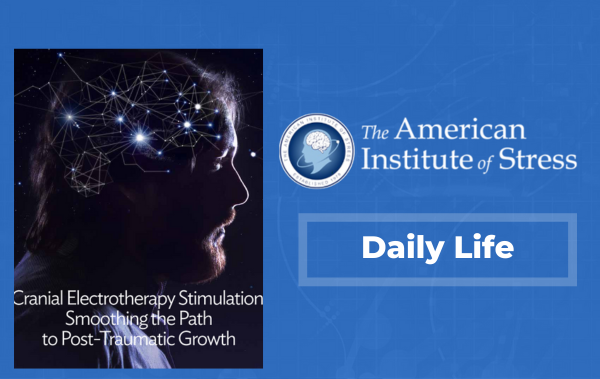The term mindfulness has been used to refer to a ‘heightened psychological state of awareness’. There are many ways to practice mindfulness. Researchers have identified numerous benefits to incorporating mindfulness into your daily routine. Some mindfulness benefits include: reduced depressive symptoms, less stress, improved memory, improved focus, less emotional reactivity (in other words, you are less snappy), increased satisfaction with one’s relationships, increased happiness, and more.
When you are mindful of your thoughts, emotions, body, and surroundings; you will begin to find that the grass is greener where you water it, rather than on the other side.
Mindfulness Exercises
There is a plethora of mindfulness tools and techniques available in books, articles. Even a quick google search will return many ideas for mindfulness. I recommend starting small and trying one or two of the twelve exercises provided below, for one or two minutes at a time. To get the most out of your mindfulness practice pick one or two exercises you enjoy and make a habit of performing them on a regular basis.
1. Rise and Shine Morning Intention

Having a morning routine provides a stable foundation for the rest of the day. It doesn’t matter what you choose to do for your morning routine, rather it matters that what you do slows down your thinking and provides peace. Creating an intentional morning routine will help you avoid feeling overwhelmed, reactive, or that your day is out-of-control. There is no one morning practice that is best for everyone. Below are a handful of common tools Nuuaria recommends for brain training and to slow the momentum of your thoughts. Try each of the tools below to see which ones you enjoy most.
- Morning journaling: Write about things you are grateful for, hopes and dreams, mantras to follow today, your goals, or your thoughts and how to change your perspective to feel differently about the situation.
- Reading: Reading is a great way to slow the momentum of your thoughts because you must concentrate on the words on the page. We have all been in our head and had to re-read a page or two because we skimmed over the words, when this happens be aware of the common habits of your mind and come back to the book.
- Guided Meditation or Open Monitoring Meditation: A great way to start meditation is by following along to a guided voice as it directs your attention to the awareness of your body, an image, or to your breath. Open monitoring meditation is where you focus on everything around you, sitting in stillness and soaking in all senses you are experiencing.
- Move Your Body: It doesn’t matter how you move your body as long as it feels good. You could go for a walk, engage in a yoga practice, do a series of body-weight exercises, or simply wake up your limbs with some gentle stretching.
2. Rub-a-dub-dub Mindfulness Exercise
The soothing sensory experience of taking a shower makes for an ideal environment that cleanses not only your body, but also the thinking mind. On a smaller scale you can apply this technique while you wash your hands or wash the dishes too. Below is a general guide to this practice.
- Adjust the water pressure and temperature to a comfortable setting
- Close your eyes and focus on your breath, exhale negativity, inhale positivity
- Feel the water hit your back and run all the way down. Turn your body so that water hits your face. Feel the sensations.
- Lather the soap as you clean yourself, take a moment and focus on the smells
- Listen to the sound of the water
- See the water. Appreciate its beauty and power to clean
3. Add Purpose to your Waiting
For those who feel they never have enough time, waiting on others can be quite frustrating. Waiting for someone or something is actually a great opportunity to sit in stillness and monitor all around you. Maybe you are waiting for a zoom call to start, use this opportunity to look around and explore as though it was your first time being in the room. Maybe you are waiting in a coffee shop, use this opportunity to listen to the sounds of the people and the cups clinking. In every moment of waiting, lies an opportunity to notice your surroundings with all your senses.
We experience less-than-desired emotions when we are too much in our head and not centered in our hearts and world. You can feel more peace when using these two techniques from the earth.
4. Mindfulness from the Earth
- Open a window, whether it is in the car, next to your office desk, or at home near your favorite chair. Feel free to close your eyes and feel the breeze on your face, notice the smells and sounds from outside.
- Practice Grounding or Earthing: Refers to contact with the Earth’s surface electrons by walking barefoot outside or sitting in the grass and feeling the earth below you.
5. Mindful Food Practices
You may learn new insights about your eating habits when you practice mindful eating.
Nuuaria clients often have to unlearn far more things than they learn new, especially when enrolled in one of our Weight Loss Programs. This is because many of us grew up learning bad eating habits which make us less mindful about what we consume. Because of this, people often struggle with distinguishing genuine hunger cues from boredom or other negative emotions. Below are three ways you can practice more mindfulness while you eat and drink.
- Mindful Coffee: In your first three sips of coffee or tea think of three things you are grateful for. Pause and take a deep reflective breath between each sip.
- Mindful Drink: Feel free to choose a beverage of your choice. I enjoy practicing mindful drinking with fruit infused water or a zippy beverage that includes warm water, lemon, and a pinch of cayenne pepper. Take your time as you sip the beverage. Focus your attention on the warmth of the glass, the heat of the cayenne, the tartness of the lemon, and take a deep breath through your nose to experience the smell.
- Mindful Eating: If you are up for a challenge, I encourage you to try mindful eating during a meal or snack. This takes a little practice. There are guided meditations available for mindful eating, or do the following:
- Use all of your senses to savor each bite.
- Feel the food you’re your hands, what do you notice?
- Bring the food to your nose and take a big whiff. When you smell the food do you experience any emotions? Do you enjoy the smell?
- It may feel silly, but bring the food to your ear. What does the food sound like? This can be fun for carbonated beverages. The first time I listened to the bubbles in peace, it made me giggle.
- Notice how your mouth salivates as you bring food toward your mouth.
- Notice how your body feels as you chew your food. Savor the texture on your tongue. Is it squishy, crunchy, chewy?
- Before you swallow, chew a handful more times than you normally would. Sip your beverage between each bite and repeat.
6. Coloring
Mindful coloring asks us to focus on how we choose and apply color to a design, which brings our awareness to the present moment. This process is similar to meditation, we let go of any thoughts about tomorrow or yesterday, or what we are going to do when we finish. Focus solely on the patterns, colors, and motor skills needed while filling in a mandala coloring page.

7. Shape Your Environment
There is an area of your brain called the Reticular Activating System also called the RAS. The RAS’s job is to make you aware of anything out of the ordinary, designed to keep you alive and safe. A low-activated RAS may feel as though you are on autopilot. You can activate your RAS and be more mindful by shaping your environment. Change the order of your phone apps regularly, triggering the need to stop and think about your next action.
You can also become more mindful by eliminating the clutter in your environment. Every item should have a purpose. Donate items around the house that no longer serve you, thank them for what they offered, and provide them a new journey with someone for whom it is more valuable.
8. Mindful Listening
To practice mindful listening, I turn on my favorite calming music, or some nature sounds. The hardest part of this practice is that you may find yourself trying to control the sounds or finding patterns in what you hear. Surrender to the sounds and let the sounds flow as they do. Your one and only job during this practice is to bring your wandering thoughts back to the sounds.
Remove yourself from distractions, and practice listening without the need to interject your own opinions.
9. Mindful Conversation
The mindful conversation is about being fully present in a conversation. When engaged in a mindful conversation, your whole attention is concentrated on what the speaker is saying. To do this you must unplug from electronics, remove yourself from distractions, and practice listening without the need to interject your own opinions.
10. Body Scan
The body scan is a very effective way to begin a mindfulness meditation practice. During a body scan, focus your attention on the sensations of your body. Starting at your toes and working your way up to the crown of your head, feel any sensations without judgment.
My favorite way to focus my attention on each body part is by closing my eyes and imagining a warm, yellow glow surrounding each area. If I feel any pain, I allow the warm, yellow glow to melt away any tension in the area. This practice is very relaxing and a great way to slow the momentum of your thoughts.
11. Mindful Walking
Sitting or lying still is not the only way to be mindful. If you find it difficult to remain motionless, I recommend mindful walking. While on the walk, it is important to focus your attention on one thing rather than letting your mind wander. There are hundreds of things to direct your attention to when walking outside. Focus your attention by:
- Listening to: the crunch of dry leaves underfoot; your heel striking the pavement; birds singing; breeze rustling the trees
- Feeling: cool air against any bare skin; warm sun on your face, a breeze through your hair; your clothes against your body
- Smelling: fresh air; flowers; trees; even unpleasant smells can help you be mindful
- Looking: at the brilliant colors of a sunrise or sunset; depending on the season, colorful flowers, the green of grass, or the myriad of colorful fall leaves.

Make a game out of it and try to find as many objects of a specific color as you can or look for things that all start with a certain letter of the alphabet. There is a wide variety of things to focus on, it really doesn’t matter which one you pick as long as you pick one. When your mind wanders, simply bring it back to that one thing.
12. Diaphragmatic Breathing
I saved the fan-favorite for last. The diaphragm is a large, dome-shaped muscle located at the base of the lungs. Diaphragmatic breathing is meant to help you use your diaphragm correctly while breathing. Lie on your back on a flat surface, with your knees bent and your head supported. Place one hand on your upper chest and the other just below your rib cage. Breathe in slowly through your nose so that your stomach moves out against your hand. Tighten your stomach muscles, letting them fall inward as you exhale through pursed lips. You can practice this exercise for 5-10 minutes a few times a day to be more mindful throughout your day.
There is No One, Right Way to Practice
There is no one, right, way to practice being mindful. These twelve fun mindfulness exercises are not the only mindfulness exercises out there, so find ones that work best for you. I encourage you to try each of them like a tasting platter. Start with a small bite and see how it makes you feel. If you enjoy one or two of these practices, build these into a daily routine and build up the time and frequency of these exercises until it becomes a habit.
If you find yourself needing accountability or help to integrate these practices into your life, know that Nuuaria is here to help. Our mentors are trained in stress reduction and thought redirection techniques. For more information on our Stress Reduction Program, which is Accredited by the American Institute of Stress, or mentorship, reach out to us at [email protected].
By: Jacquelyn Ikonomov





